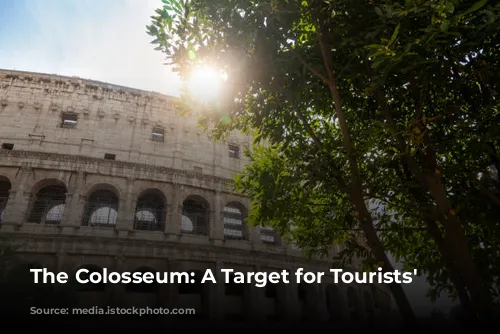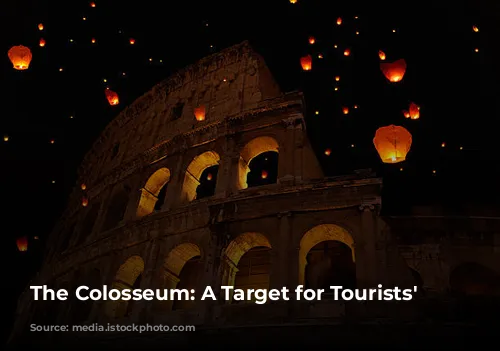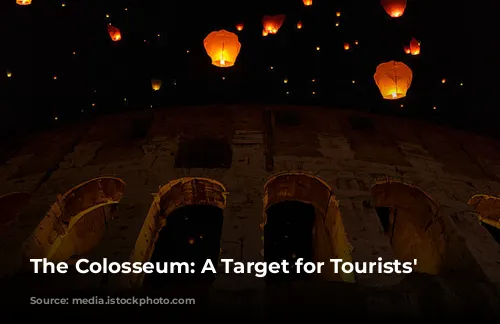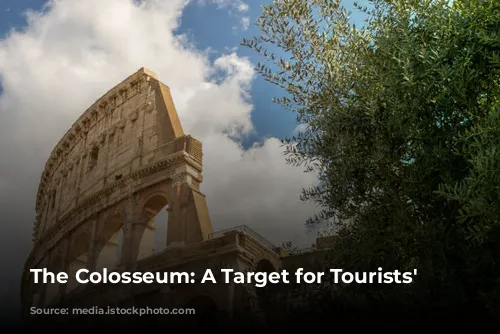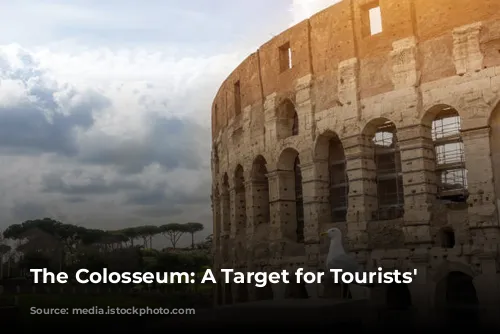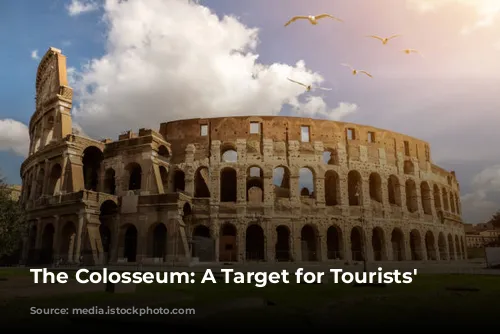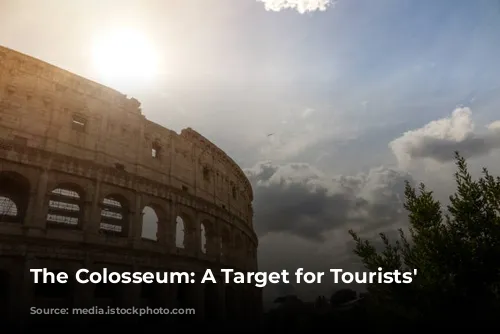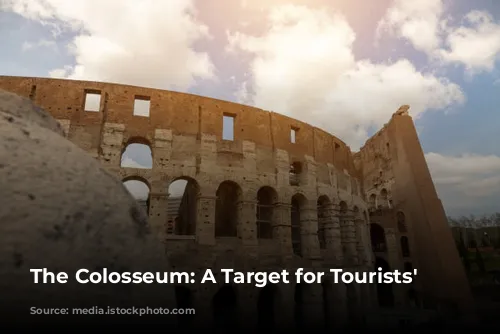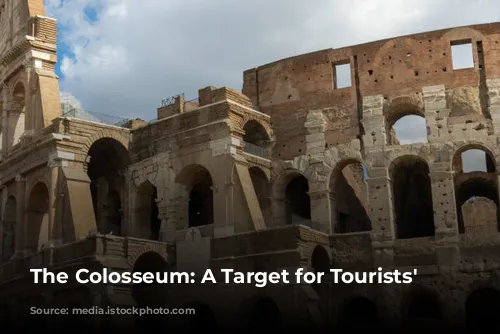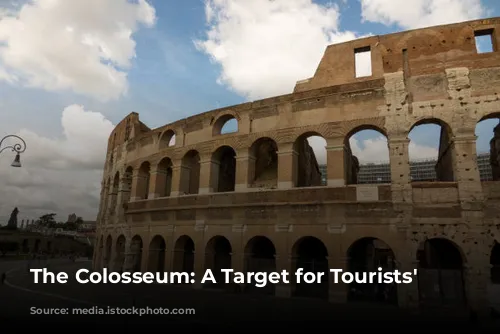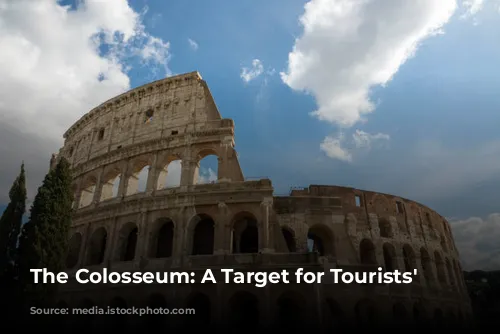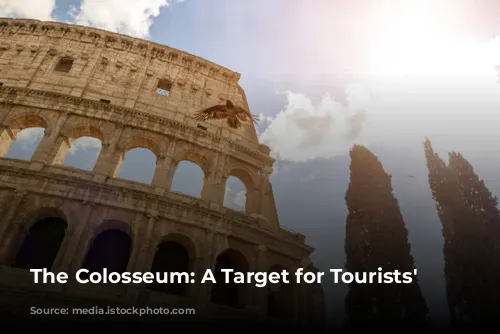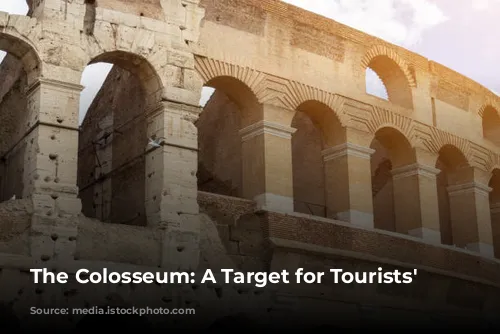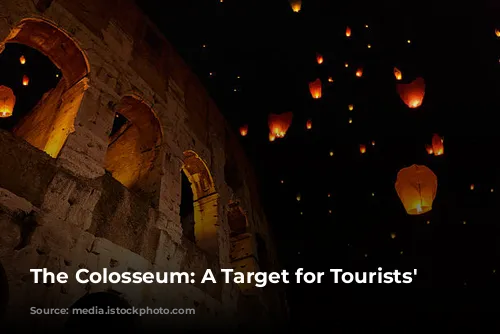The Colosseum, a majestic symbol of ancient Rome, has been facing a growing issue: vandalism. Tourists, seemingly oblivious to the historical significance of the landmark, are leaving their mark on its walls, a trend that is causing outrage among locals and authorities alike.
Teenage Tourists Deface the Colosseum
Two recent incidents involving teenage tourists have sparked widespread condemnation. A 17-year-old Swiss girl, on vacation with her family, was caught carving her initials into the Colosseum wall. Her parents, instead of acknowledging the severity of the situation, dismissed it as a minor offense, displaying a shocking lack of awareness about the monument’s historical value.
The following day, another 17-year-old, this time a German tourist on a school trip, was apprehended for a similar act of vandalism. These incidents highlight a concerning trend of disrespectful behavior among young visitors, and the need for better education about the importance of preserving historical sites.
A Pattern of Disrespect
These recent events are not isolated incidents. In June, a 27-year-old Bulgarian tourist made headlines worldwide after he carved his name and his partner’s name into the Colosseum wall, along with the year “23.” This act, deemed “uncivilized and absurd” by the Italian culture minister, prompted widespread criticism and legal action against the tourist. The man, caught red-handed and facing hefty fines and potential prison time, even claimed to be unaware of the Colosseum’s ancient origins, further deepening the dismay of Italian authorities.
Over the past few years, the Colosseum has been targeted by countless tourists who think it’s acceptable to leave their mark on this historical masterpiece. From initials carved with keys and coins to names etched with knives and stones, these acts of vandalism are a blatant disregard for the significance of this world-renowned landmark.
Can Education Be the Solution?
While some tourists may be unaware of the repercussions of their actions, others claim they believed it was acceptable to add to the existing graffiti on the Colosseum’s walls. However, this reasoning fails to consider the historical and artistic value of this ancient structure.
The authorities are actively working to address this issue. Alfonsina Russo, director of the Colosseum archaeological park, has pointed to a “lack of civic education” among tourists who are more focused on taking selfies than appreciating the historical significance of the site. She has stressed the need to educate younger visitors and ensure that the Colosseum’s surveillance system is robust enough to deter potential vandals.
The question remains: will the message ever sink in that vandalizing the Colosseum is unacceptable? Only time will tell if education and stricter enforcement can protect this iconic landmark for generations to come.
